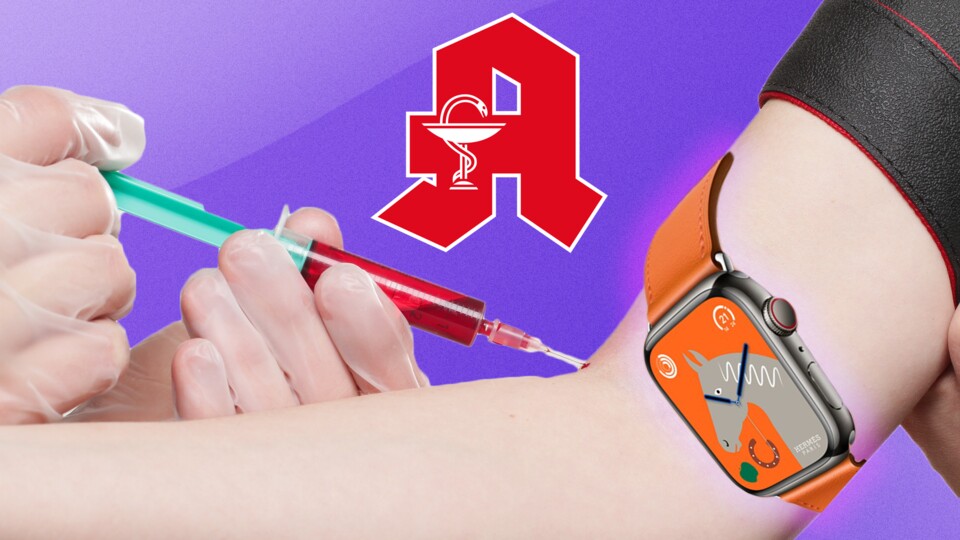Source: Pixabay
To address the question from the title: Will there soon be an Apple Watch that detects diabetes?
The answer is: probably not – at least not tomorrow or next week. In the near future, however, more so. You can find out why this is the case below.
Blood glucose measurement with smartwatch: fact or fiction? A detailed article by editor Victoria Song has now appeared on verge.com; In this song, Song takes a critical look at blood glucose measurement via Apple Watch – and shows which steps still need to be taken and which hurdles have to be overcome before non-invasive blood glucose measurement arrives on the Apple Watch.
Widespread disease diabetes: Some people inherit it, others develop it in the course of their lives: Diabetes is a widespread disease. Obesity and lack of exercise can also be triggers. It is part of everyday life for those affected to regularly supply their body with insulin (see also the information box).
What is insulin?
To put it very briefly: It is a hormone.
Expressed close to everyday life: During your lunch break you nibble on a piece of pizza. When you eat, sugar enters your bloodstream packed in carbohydrates. The hormone insulin ensures that the absorbed sugar is transported into your cells.
That is why diabetes is called diabetes. Diabetics usually have too much sugar in their blood; However, the blood sugar level is highly dependent on what affected people eat, how much physical activity they do – and how much insulin was injected.
(Non-)invasive intervention: Regularly pricking your fingertips to get your body’s blood is part of everyday life for diabetics. This is also referred to as an invasive procedure. But there is also the so-called flash glucose monitoring, in which those affected wear a sensor on their upper arm. With its current development, the manufacturer from Cupertino is preparing to bring non-invasive blood sugar monitoring to its smartwatch.
About the history: On February 24th, 2023, colleague Patrick Schneider explained in a report why the Apple Watch has long been more than just a fashion accessory – it is also good for your health. Read the history with us.
Will non-invasive measurement be possible soon?
How does blood glucose measurement with the smartwatch work? Colleague Schneider clearly explained the process in his article (see link above). In a word: it becomes the so-called absorption spectroscopy
used. That’s a big word for a process in which “a light from a laser is shone under the skin [wird]to determine the concentration of glucose in the blood«. However, this is a process that is already being used with smartwatches – for example to measure heart rate or blood oxygen content. So: Nothing new for now.
Absorption spectroscopy used differently: In contrast to the measurement of heart rate or oxygen content in the blood, blood sugar measurement does not use green or red LEDs – but infrared light.
So much for the basics. But why wasn’t blood sugar measurement via smartwatch installed as a function the day before yesterday?
If your fingertips are already itching to strap a smartwatch around your wrist, allow us to bother you with a curated selection of wearables to match. Then we continue directly with the article.
Challenge No. 1
The signal is too small. In her article, Song quotes a gentleman named David Klonoff; he is editor-in-chief of the scientific specialist publication Diabetes Science and Technology
. Klonoff says:
“The signal we get back when measuring blood sugar is very small.”
In layman’s terms, because the signal received is so small, it’s difficult to separate glucose from similarly structured chemicals in the body. So the received signal is moderately trustworthy.
Challenge No. 2
Water falsifies the measurement result. And since our bodies are largely made up of water, this is relevant. John Mastrototaro, CEO of Movano
(a technology company with a focus on health), says in the same article:
“Water interferes with measurements in optical methods [wie der Absorptionsspektroskopie]. If the amount of water changes even slightly, it can dramatically affect the measurement.
Challenge No. 3
Concerns external influencing factors. These are located, so to speak, outside of a smartwatch. Besides the physical exercise when you wear a smartwatch on your wrist; or the poor skin contact, if you have not attached the smartwatch properly, the sun in particular could be the final boss for the envisaged blood sugar feature. How come?
Ultimately, as Song describes in her article, infrared light is heat. For the sensors built into a smartwatch, it is not always easy to distinguish whether the perceived heat comes from the infrared light of the smartwatch – or from the sun beating down on a beefy hot summer day. The global spiral of escalation in terms of climate catastrophe will not work in favor of smartwatch blood sugar measurement.
Challenge No. 4
There is already a solution to the challenge with the sun’s rays: by measuring several wavelengths of light at the same time, it would be possible for the smartwatch to better distinguish between the measured light. That means: the more different wavelengths are measured, the better the blood glucose measurement would work – because the smartwatch understands:
Oh! This light beam belongs to the infrared light – and is relevant for the measurement. This light beam belongs to the sun – and is irrelevant for the measurement.
Challenge recognized, challenge banned? Not quite. Because: In order to implement a more differentiated measurement, more sensors would have to be installed in the smartwatch – which means that the developers run the risk of screwing together a clumsy, unwieldy device. Or: all the sensors draw too much power – and make the smartwatch overly dependent on the socket.
Maxe Schwind is one of the people who used to be strangers to wristwatches of all kinds, but now no longer wants to go to bed without his Apple Watch 7. Find out in his test report, which is worth reading, how the wearable convinced him.
More challenges
In her article, Song lists other challenges that are beyond the scope of this story. However, one of Song’s concerns seems particularly relevant: the risk associated with a non-invasive measurement. In short: Suppose the blood glucose measurement using the smartwatch is faulty – and leads to an incorrect insulin dosage. What does that mean for those affected? It can mean a life-threatening situation.



 What’s happening with AI? Researcher explains why you can look forward to more creative NPCs, competition for ChatGPT and hot dog tomatoes
What’s happening with AI? Researcher explains why you can look forward to more creative NPCs, competition for ChatGPT and hot dog tomatoes Cowboy launches new on-demand service: That’s what’s inside
Cowboy launches new on-demand service: That’s what’s inside The new 4K Fire TV stick is now brutally reduced and transforms your old television into a smart TV
The new 4K Fire TV stick is now brutally reduced and transforms your old television into a smart TV The best mouse I’ve ever had, convinces me for gaming, work and home office and is different than all its predecessors!
The best mouse I’ve ever had, convinces me for gaming, work and home office and is different than all its predecessors! The first smart glasses suitable for everyday use that you can buy
The first smart glasses suitable for everyday use that you can buy